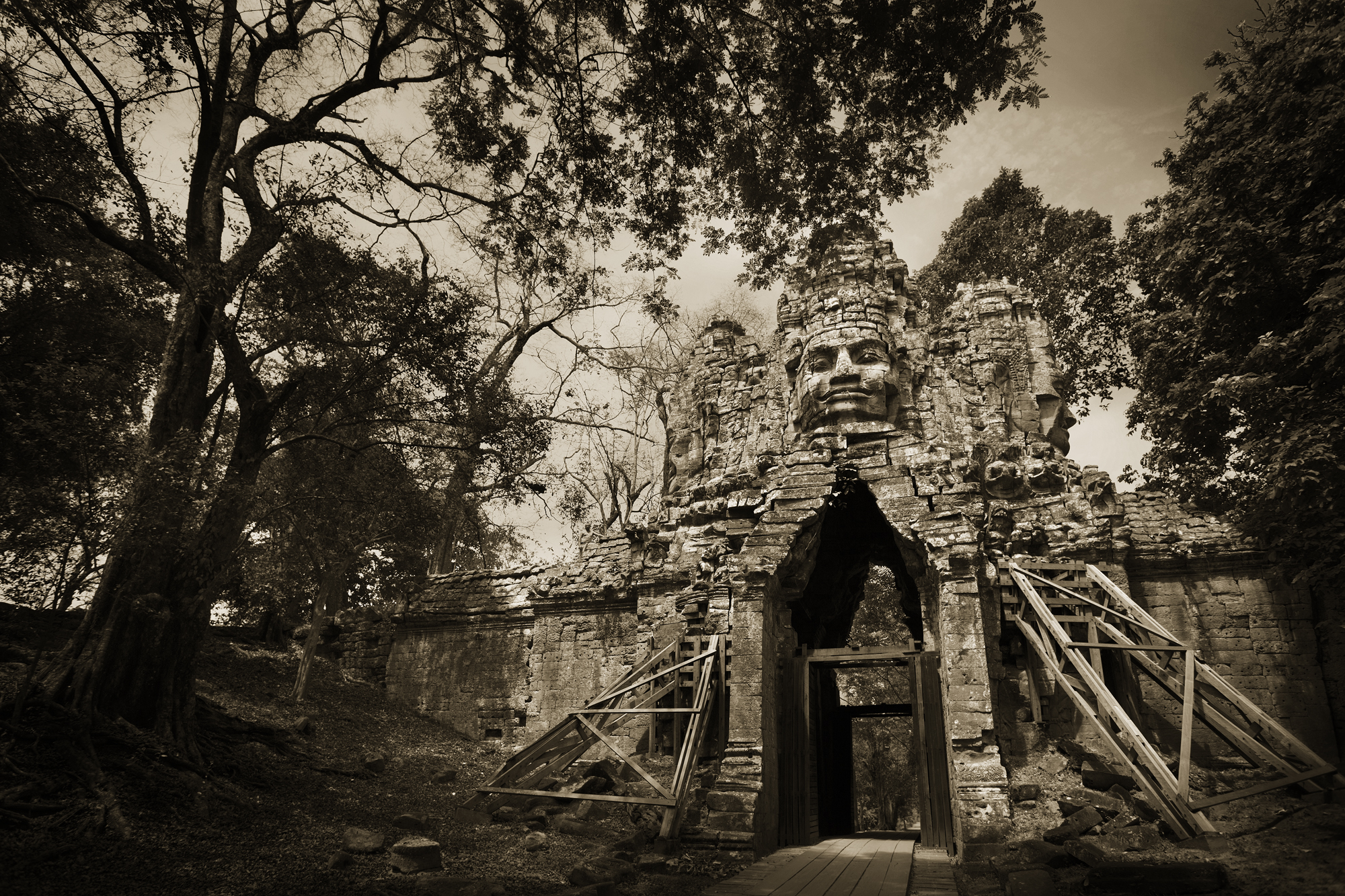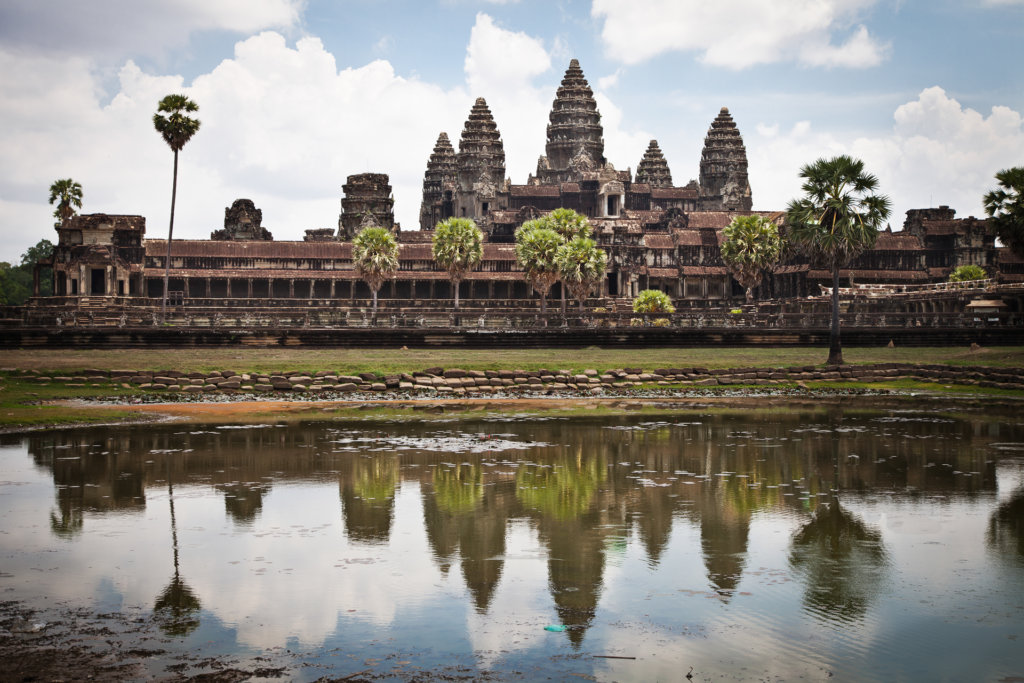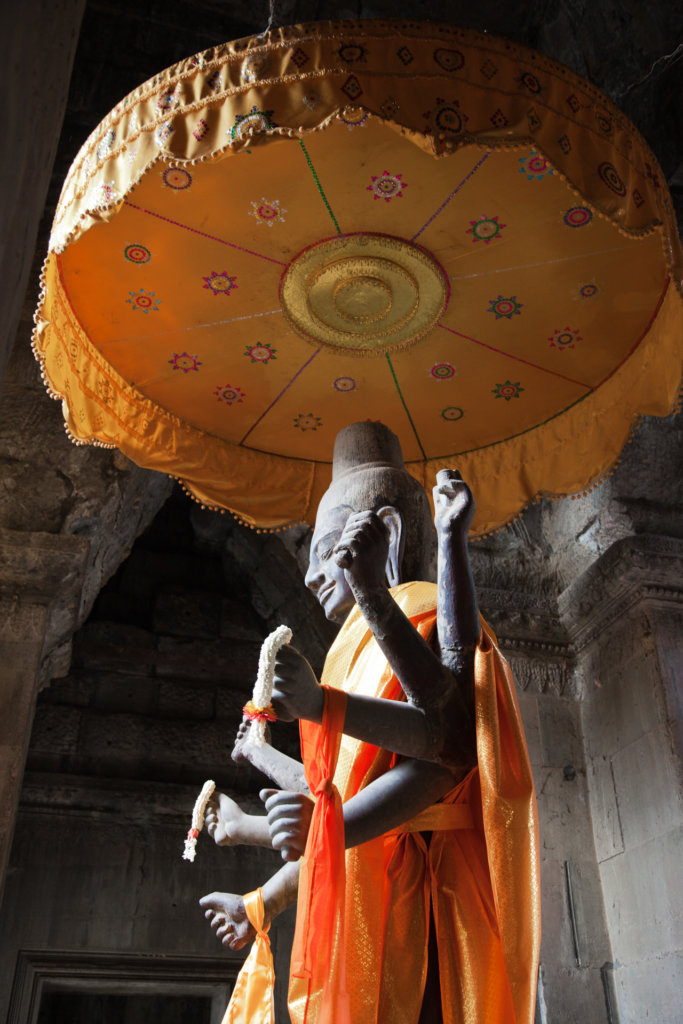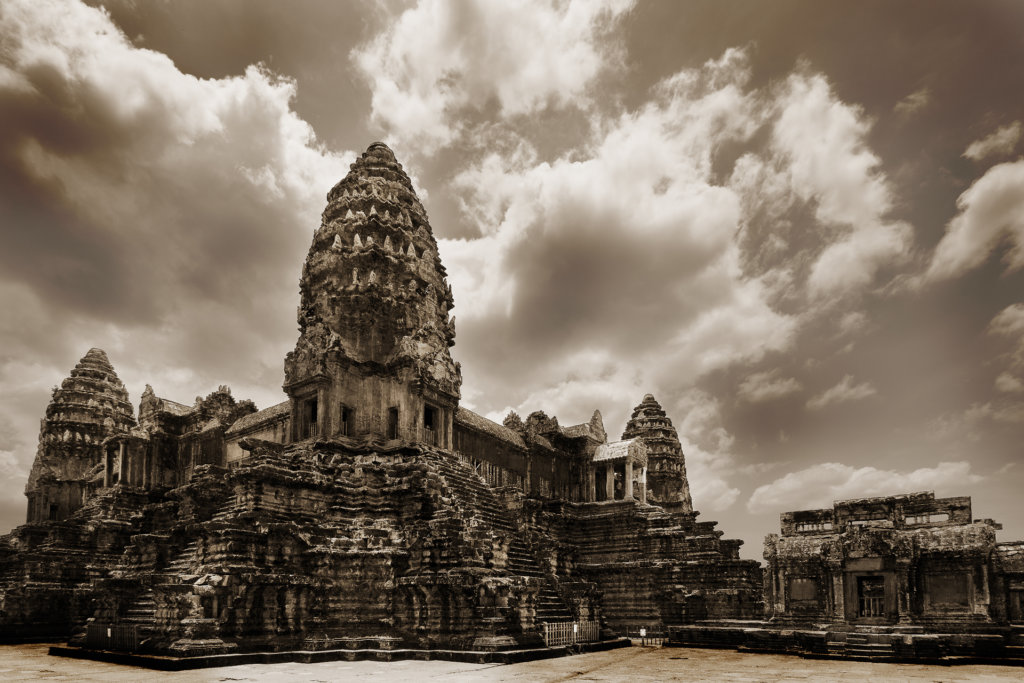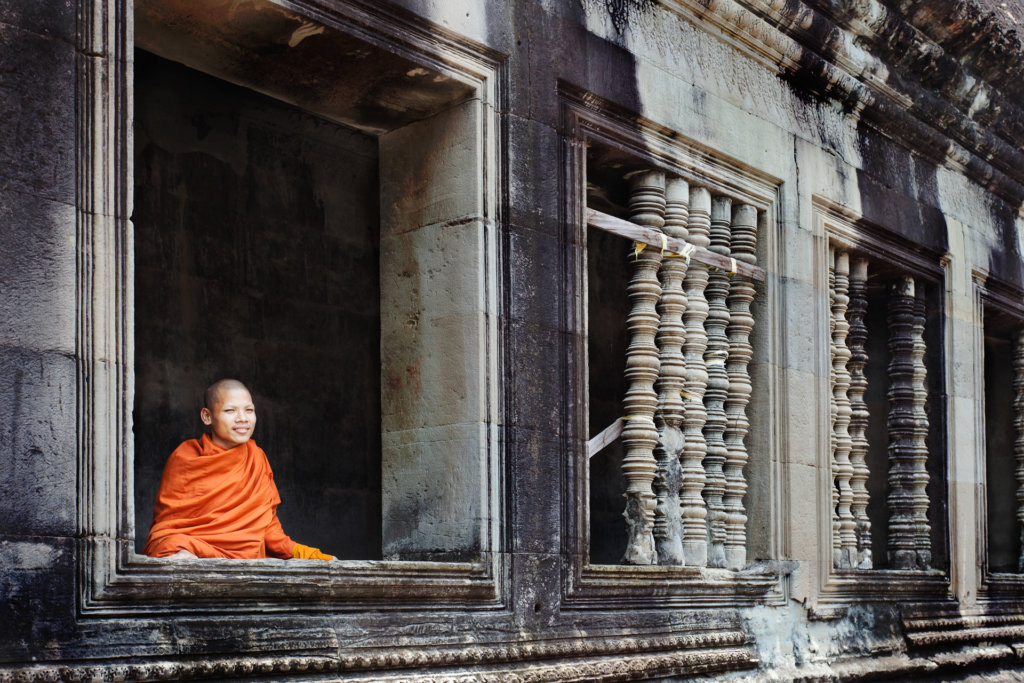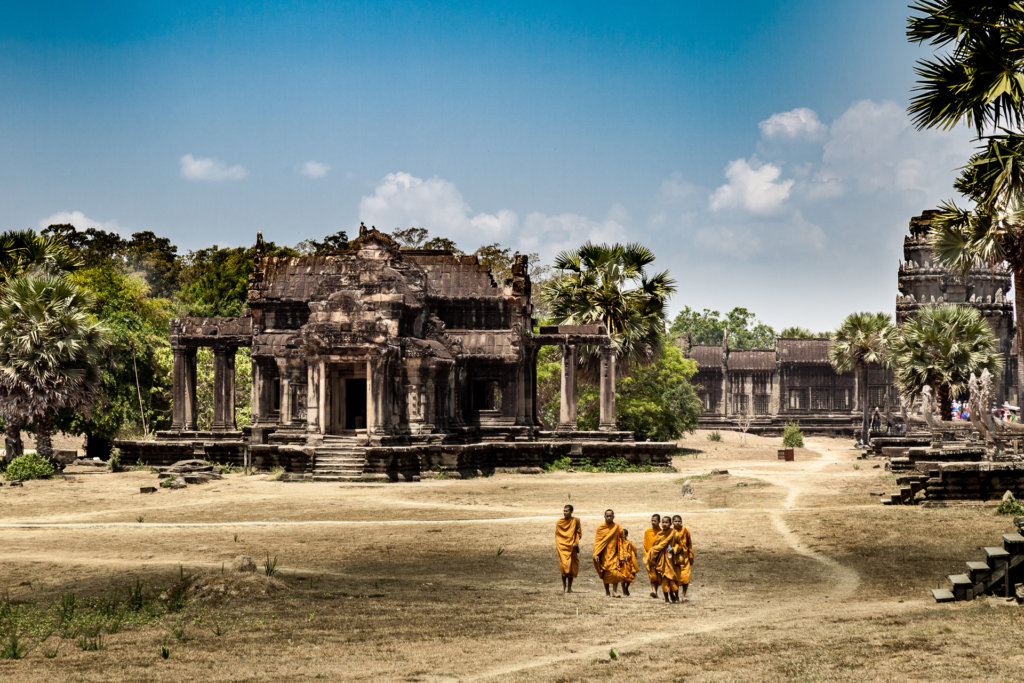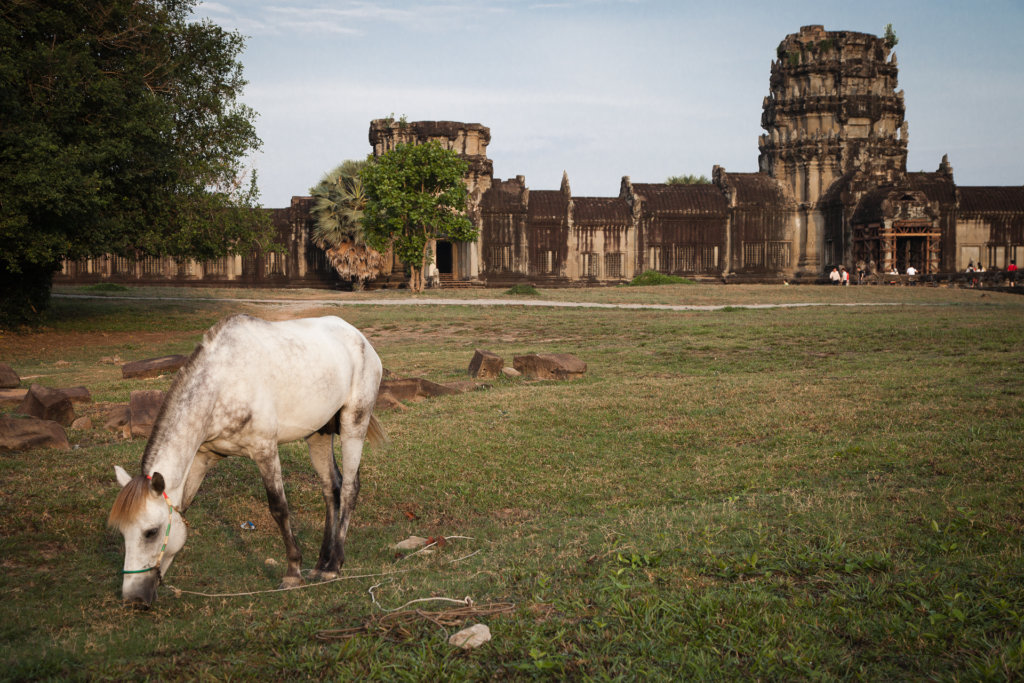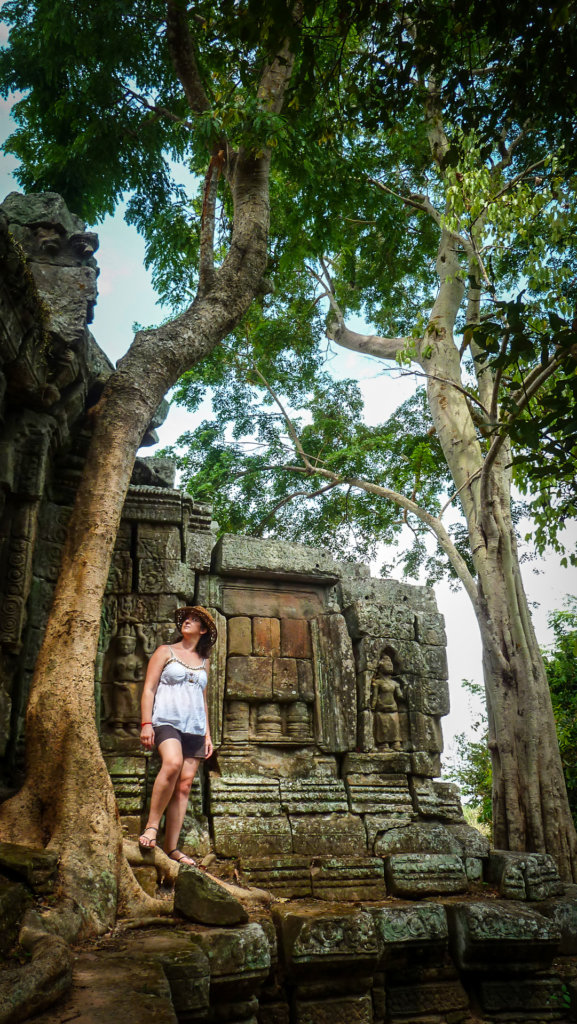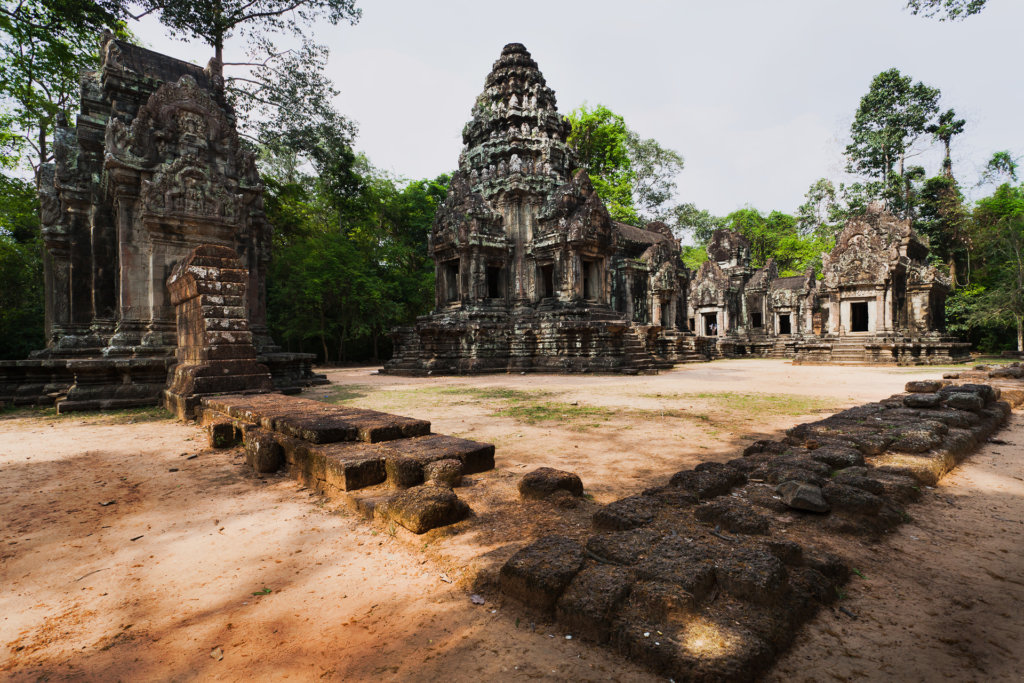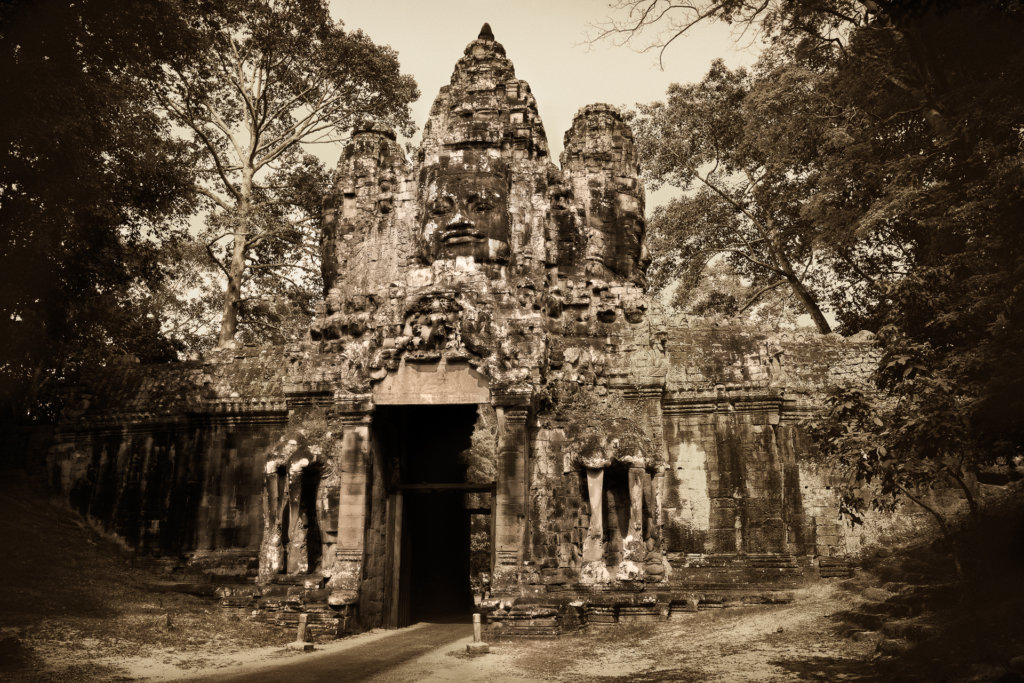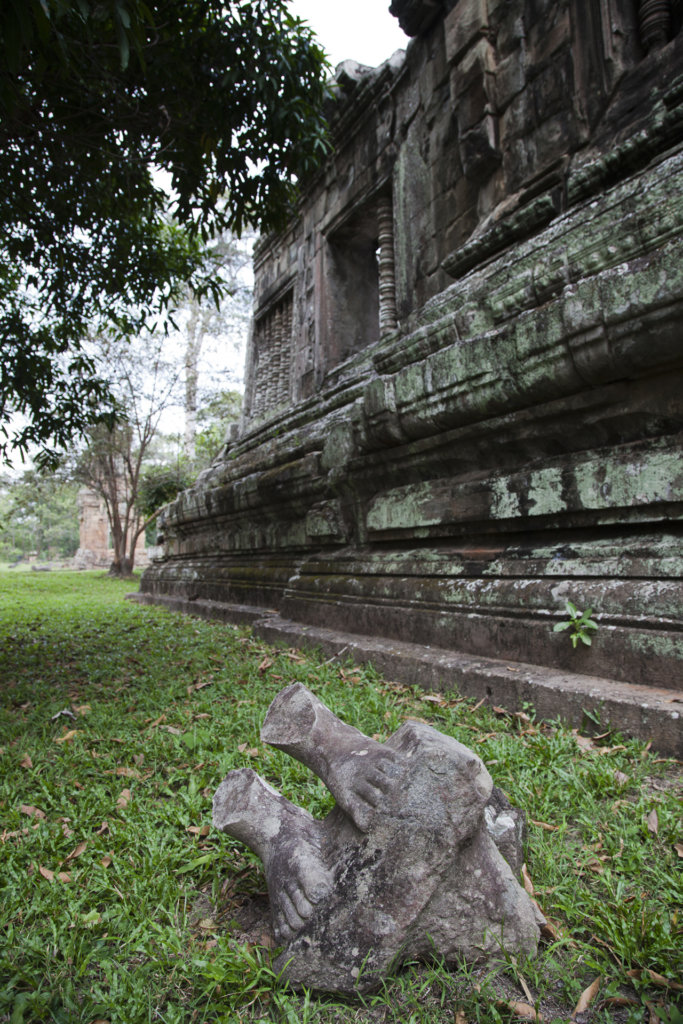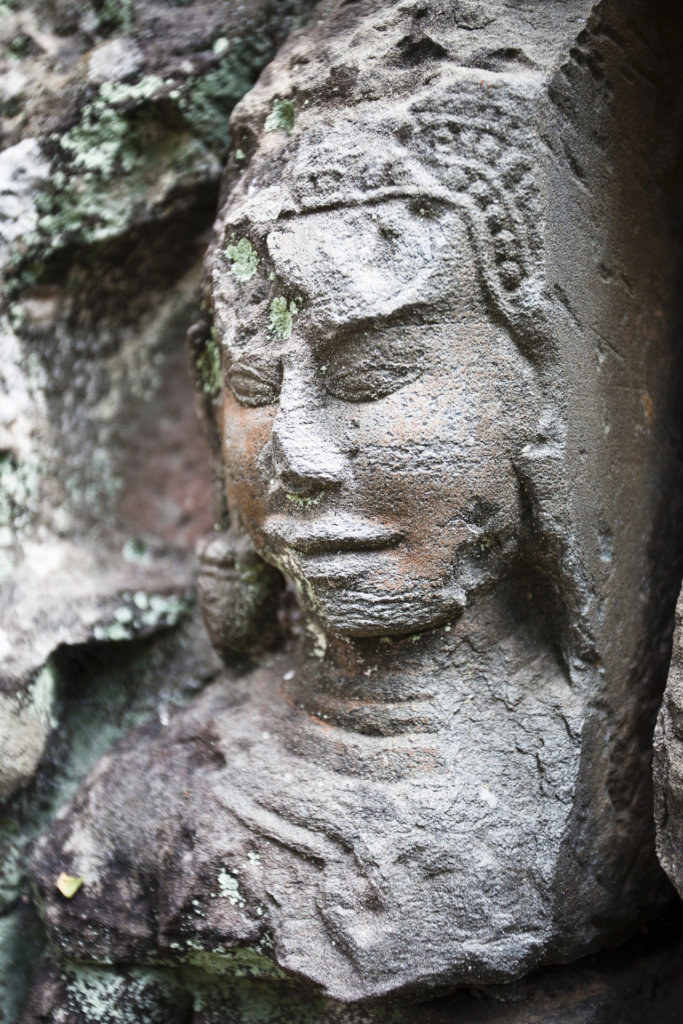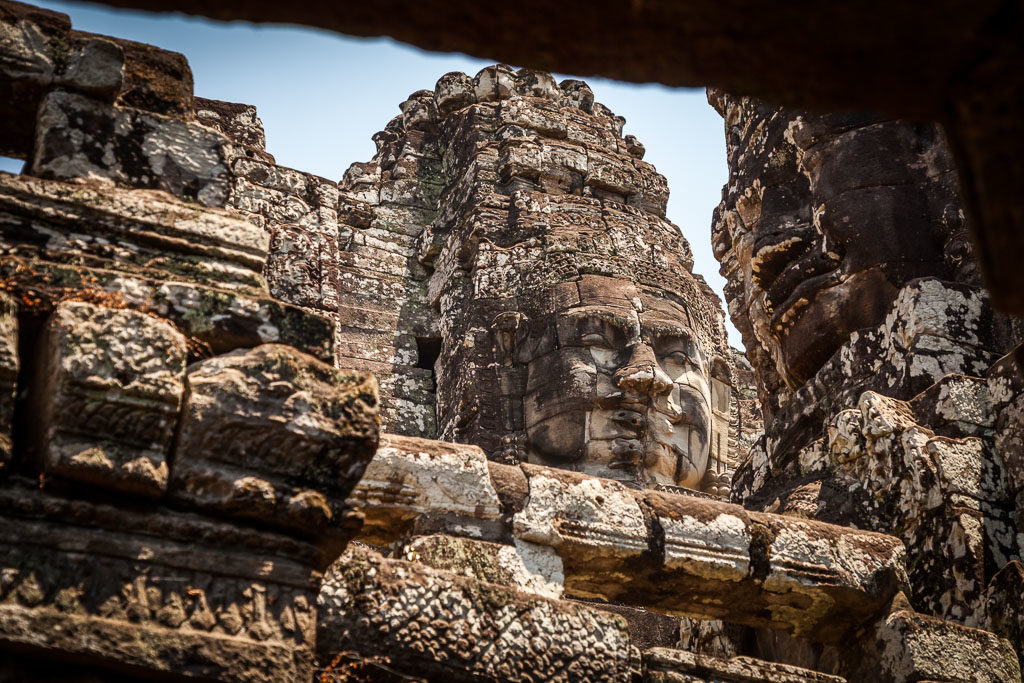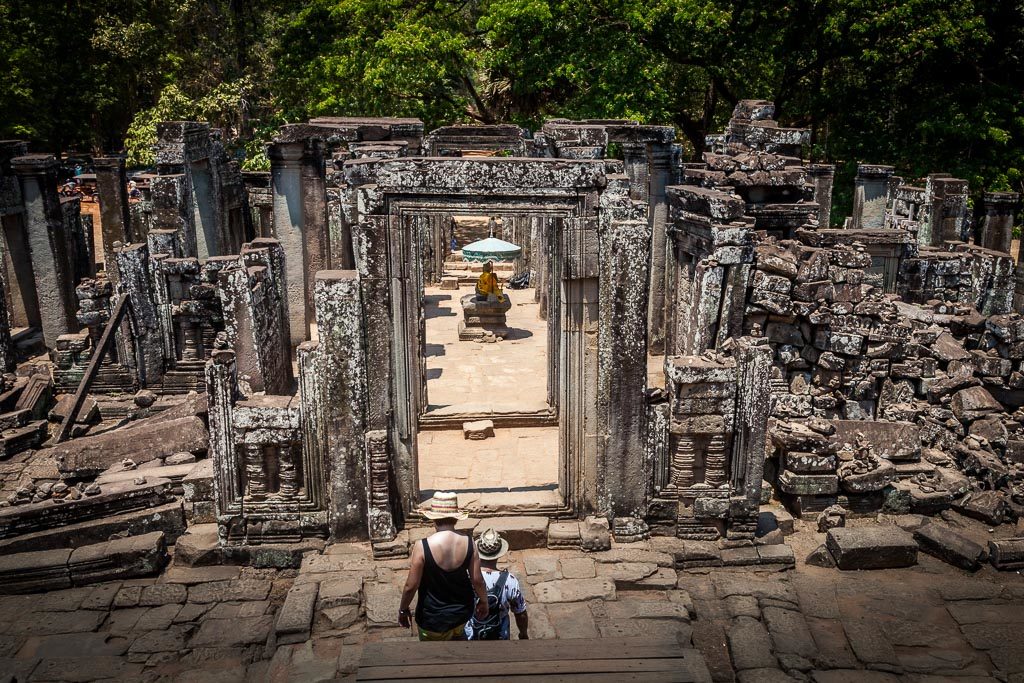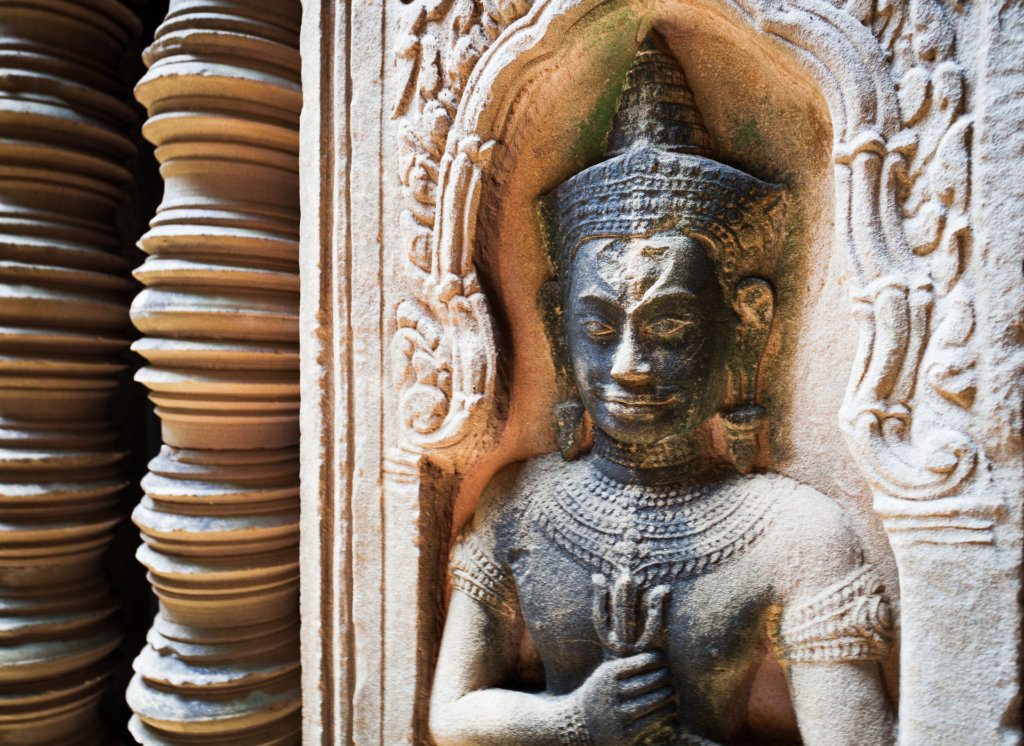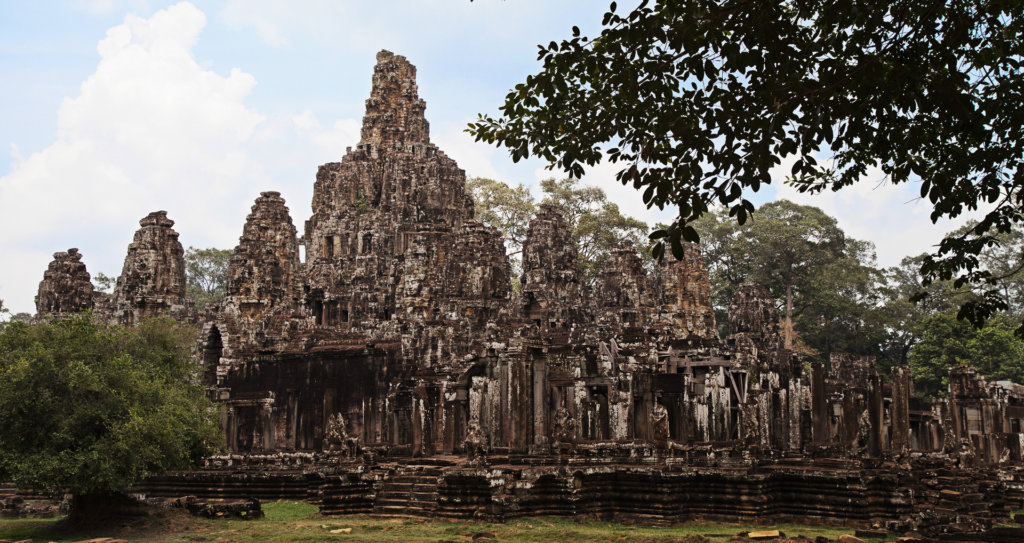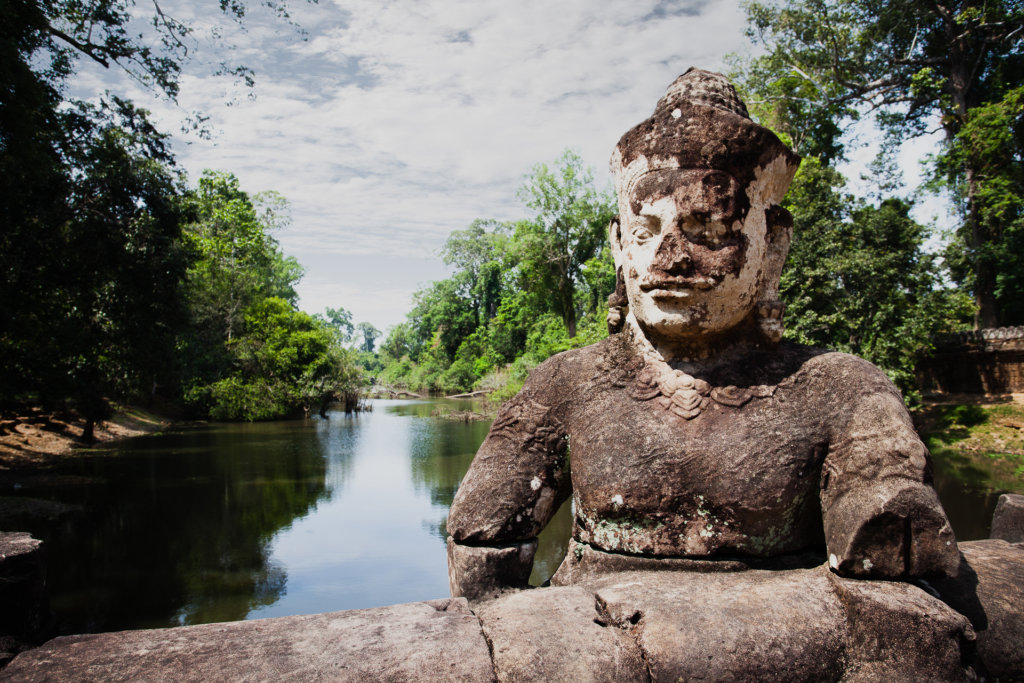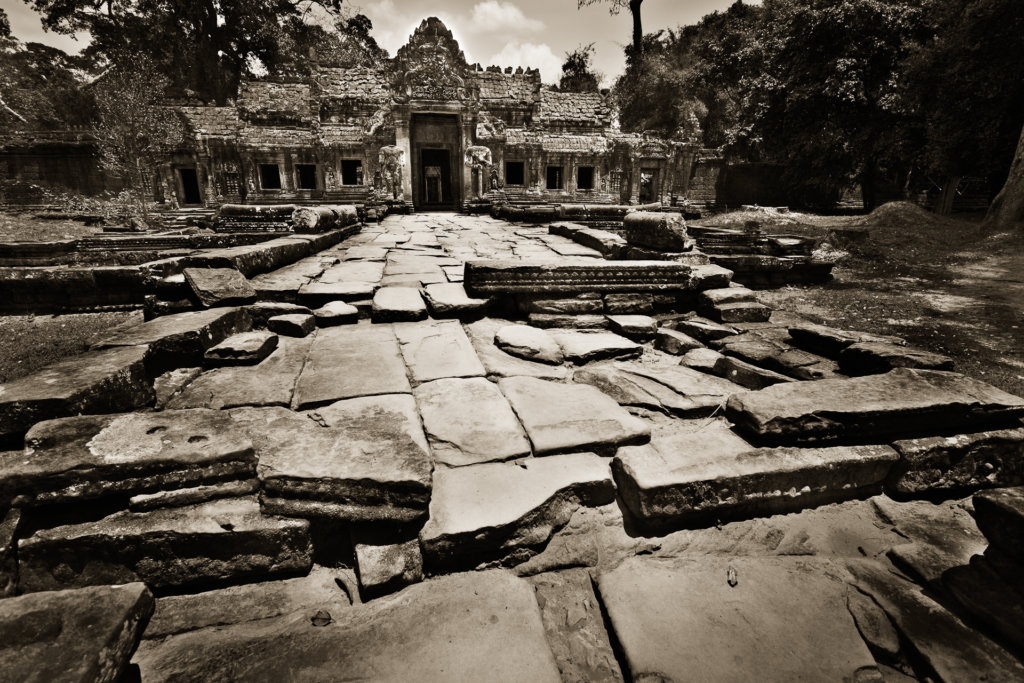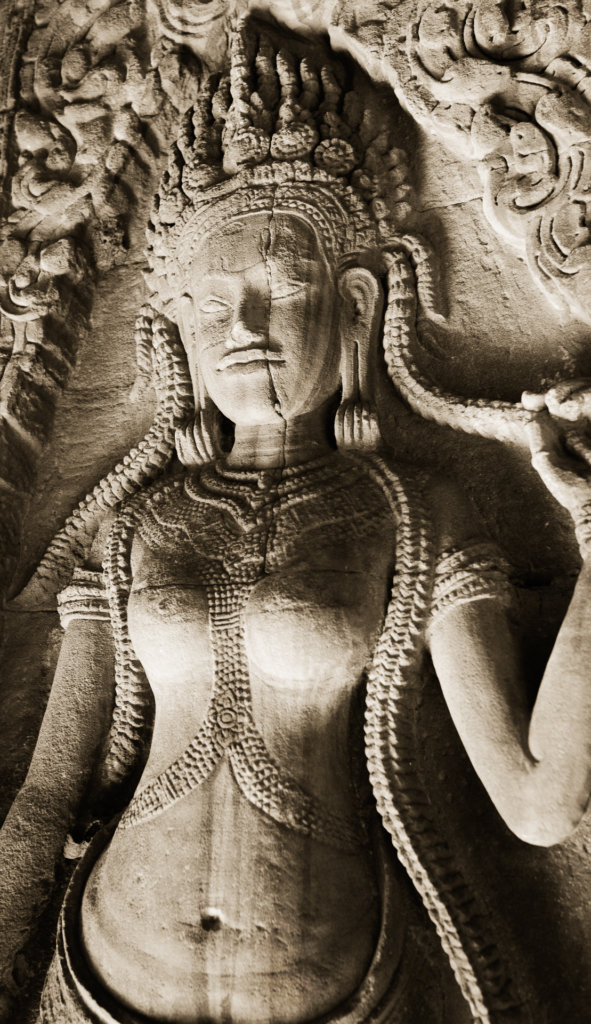Angkor Wat
“City Pagoda” – 1113 – 1150 AD
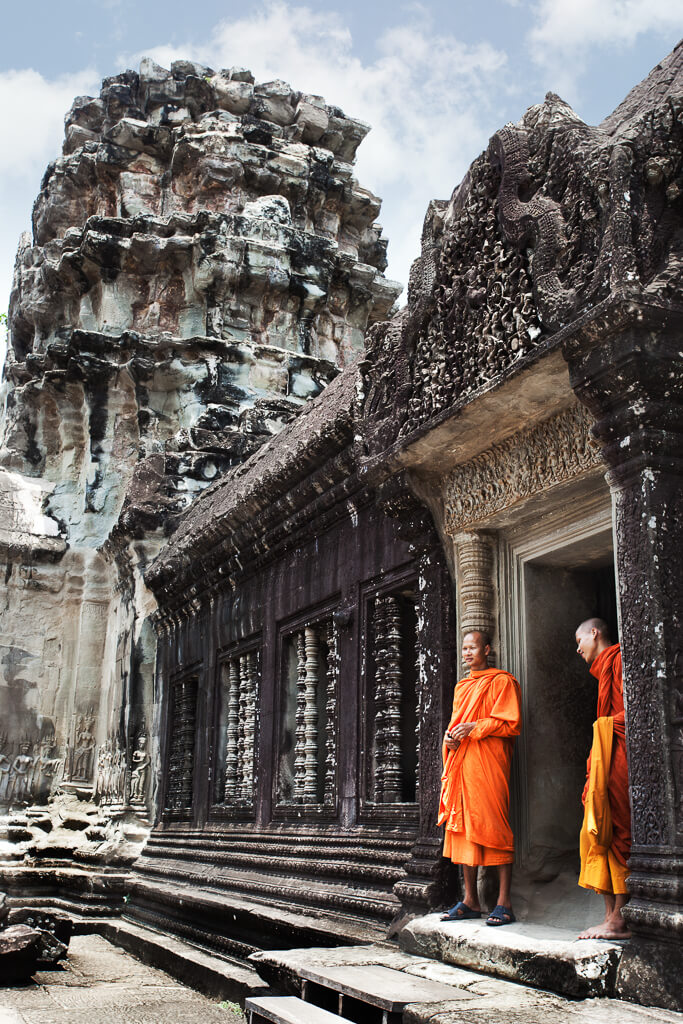
Angkor Wat is sprawling. Its moat, enclosures and towers represent the Universe. A visit starts with a stroll across the causeway, over the moat and through the West Terrace, which is part of the outer wall. This is all an adventure in itself.
Emerging into the grounds, central Angkor Wat is still quite a distance ahead. Within the grounds are libraries and ponds, a horse and the numerous souvenir stalls and refreshment stands, which are tastefully tucked together in a row. Off to the side is the main pond, which is the meeting ground for the perennial sunrise crowd and those wanting the classic reflection shot.
Entering the main temple complex brings innumerable sights and experiences. From the infinite carvings, which are both decorative and narrative, to sitting inside a quiet corner pavilion and disturbing the resident bats by torchlight, to discovering the ‘Echo chamber’ – clap or talk and you hear nothing unusual, but pound your chest and it reverberates magically throughout the open room.
Enter the concentric enclosures and find yourself higher and closer each time to the symbolic centre of the Universe. It is difficult to comprehend the complexity of building such a structure, and the ascent to the Inner Enclosure would be torturous at best (fatal at least) if not for the incredibly steep and still difficult stairs that have been added for us mortals not capable of gaining access by traditional entry methods.
And so, behold the Inner Enclosure, a place for reflection. Wait long enough, and the crowd will disperse so that you can sit and contemplate, or explore the four shrines within the central tower, all accessed by separate walkways from each of the surrounding corridors—an entirely blissful and special space.
Make the journey to Angkor Wat, wander through the grounds and into the central temple complex. Climb up to the Inner Sanctum, sit, wait, take in the atmosphere and remember where you are in the world right now.
Angkor Thom
“Great City” – Late 12th Century
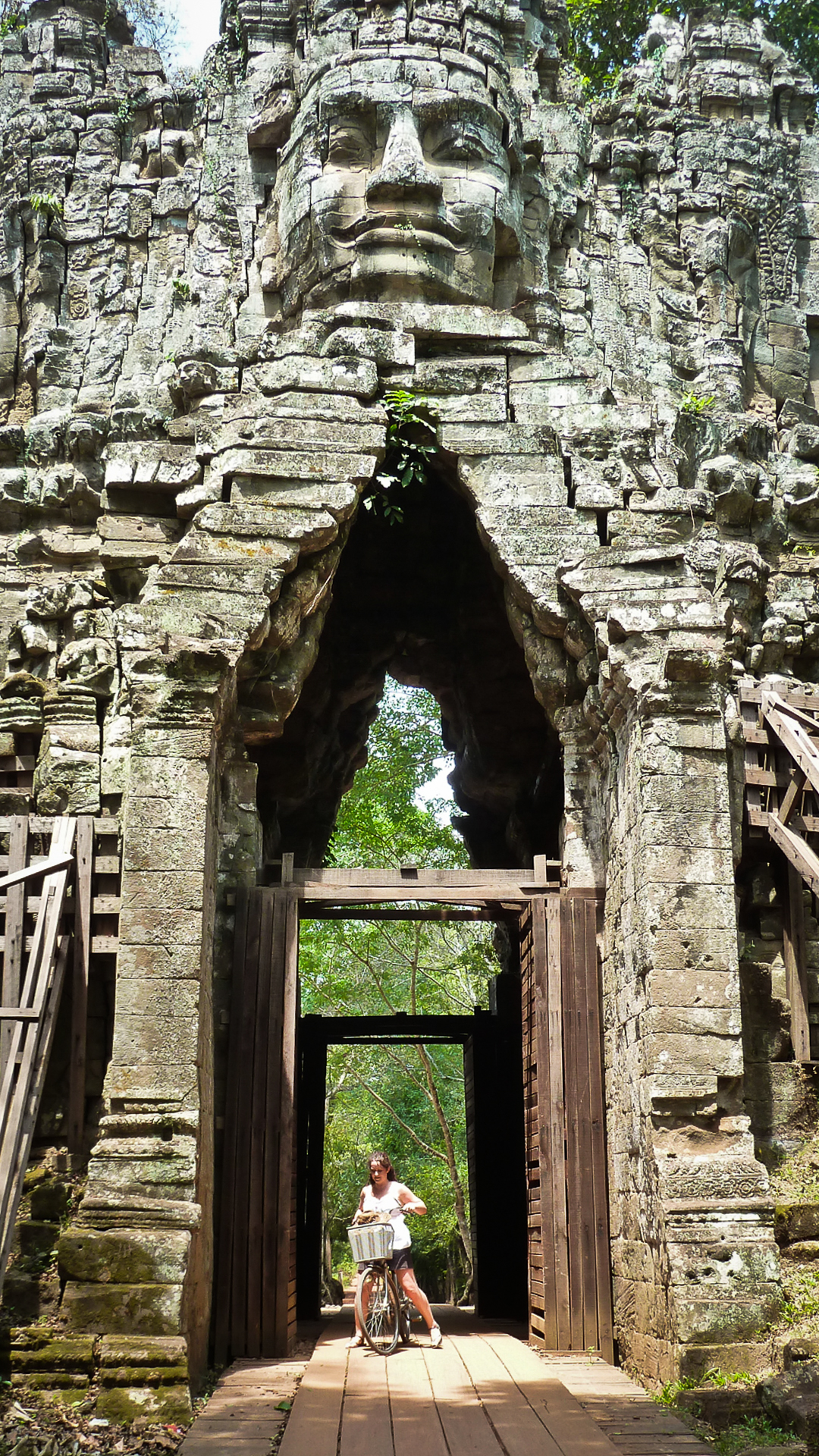
“Angkor Thom is undeniably an expression of the highest genius. It is, in three dimensions and on a scale worthy of an entire nation, the materialization of Buddhist cosmology, representing ideas that only great painters would dare to portray”. (tourismcambodia.com)
We approached Angkor Thom armed with bicycles, transported for us by Remork (Tuk-Tuk). Please don’t believe it when you are told that bikes won’t fit in a Remork. Cambodians are far too friendly and accommodating to refuse you, so ask, you will no doubt be lucky.
Upon arrival and after a lovely journey, sweat-free and passing by interesting roadside stalls, the occasional monkey and through pretty forests, we disembarked and took an immediate detour off to the left. Along the outer edge of the moat to Prasat Bei (with an obvious meaning of ‘three towers’), a small and seldom visited temple, we also discovered what I called the ‘Moat Boats’, a collection of Garuda headed gondola style boats.
So here we are, approaching the South gopura (gateway) of Angkor Thom. A famous and fabulous sight. Crossing the moat with its Gods and Demons lining the causeway left and right, we did not continue ahead and through toward The Bayon, and it’s other equally famous resident temples – no, off to the left again we ventured.
With bicycles on shoulders, we climbed up the dirt mound and onto the ancient wall of Angkor Thom. For three kilometres (one and a half to the corner, one and a half around to the West gopura), this wall was all ours and with not another person in sight. What a beautiful thing to experience the wonder of Angkor with not a single tourist anywhere near you! All of this on the most lovely forest track you could ever wish to cycle on, with a temple ruin at the corner of the wall and another spectacular gopura awaiting to the west. To climb all over an ancient gateway and have it all there just for you, except for the occasional local, meandering through casually on an equally ancient-looking motorcycle is priceless.
Once back inside the core of Angkor Thom, there are too many gems to mention, suffice to say that an entire day can be spent exploring the collection of structures just inside these walls.
The Bayon
“Leading Sacred Amulet” – Late 12th Century
The Bayon is located exactly in the centre of the fortified city of Angkor Thom. When it was discovered, it was completely overgrown with jungle, as most of the temples were before restoration projects began.
The general view of The Bayon is stunning due to its location, with all roads within Angkor Thom leading directly to and around it. Upon entry, however, a whole new world unfolds. Intriguing rooms and hallways turning this way and that, almost like a maze. At every view, carved columns and walls show stories of daily events, battles, Devatas and dancing Apsaras.
And then, when you emerge out into the upper terrace – the faces. A multitude of serene faces. Seemingly disguised from the outside, the famous Bayon faces are watching in every direction.
Ta Prohm
“Ancestor Brahma” – Late 12th Century
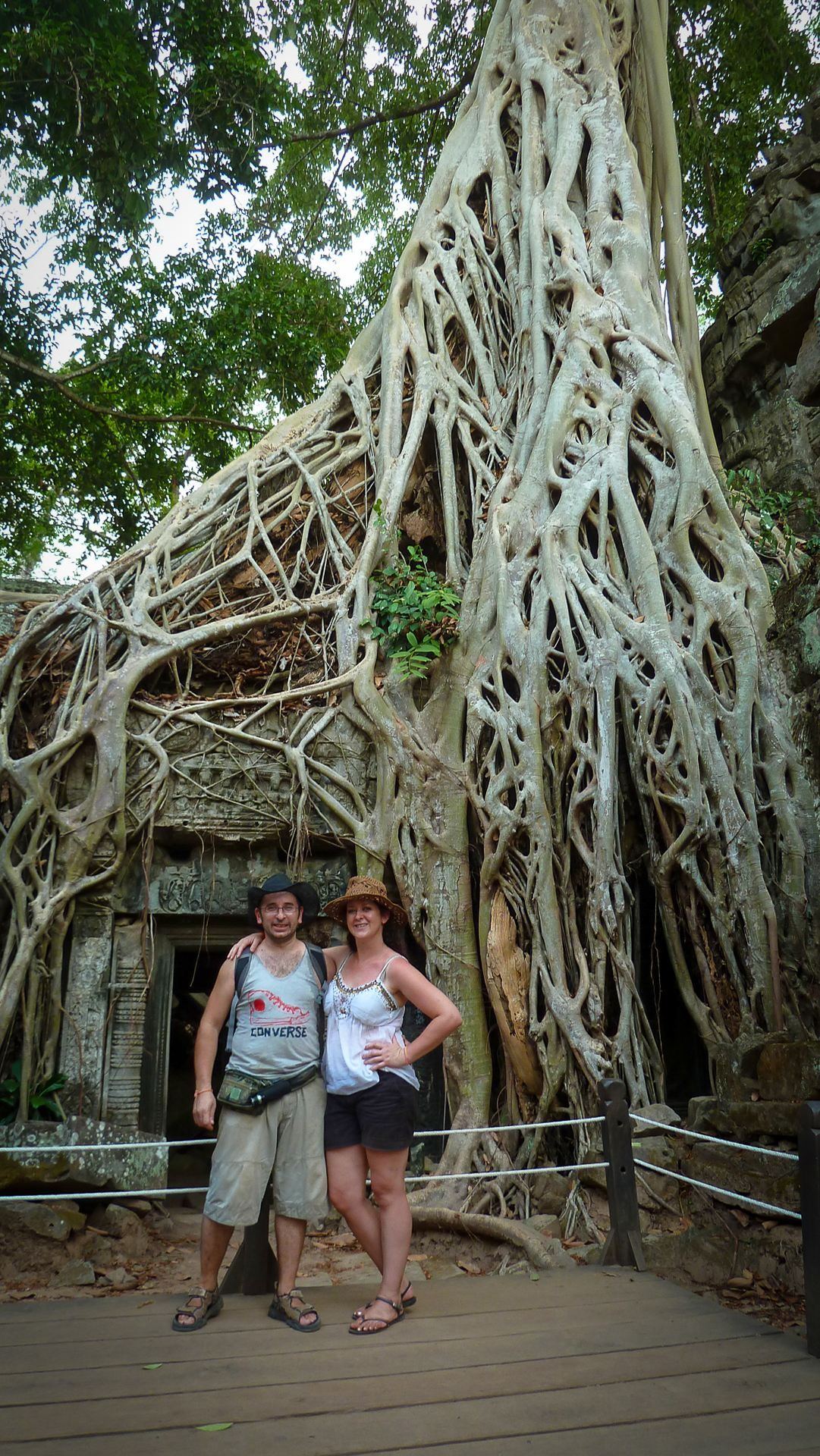
Stone and wood stand tangled here in a silent, slow battle, like a wrestling match that takes centuries to win.
Quite a number of trees devour parts of the ruins of Ta Prohm, either silk-cotton trees, dripping like lava over the gallery rooves, or strangler figs, framing doorways like a stringy curtain. In the late afternoon light, the silk-cotton trees look like they have just been washed with gold paint, glowing victoriously in the sun.
Outer galleries are partly collapsed, and the pillars at each end stand in a spectacular diagonal pose, nearly fallen, but propped against the rubble. It’s a frozen moment, and it makes you try to imagine seeing the collapse in action.
The ‘Tomb Raider’ movie was filmed here, and it certainly does seem that there is a potential movie set or photographic opportunity at every turn.
Ta Prohm, ‘Jungle temple’ lives up to the hype.

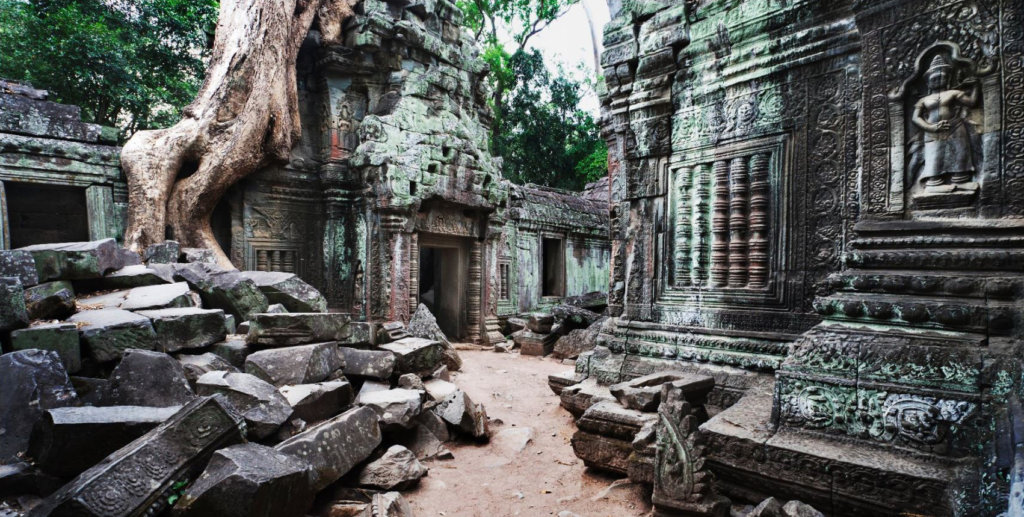
Ta Som
“Ancestor Som” – Late 12th Century
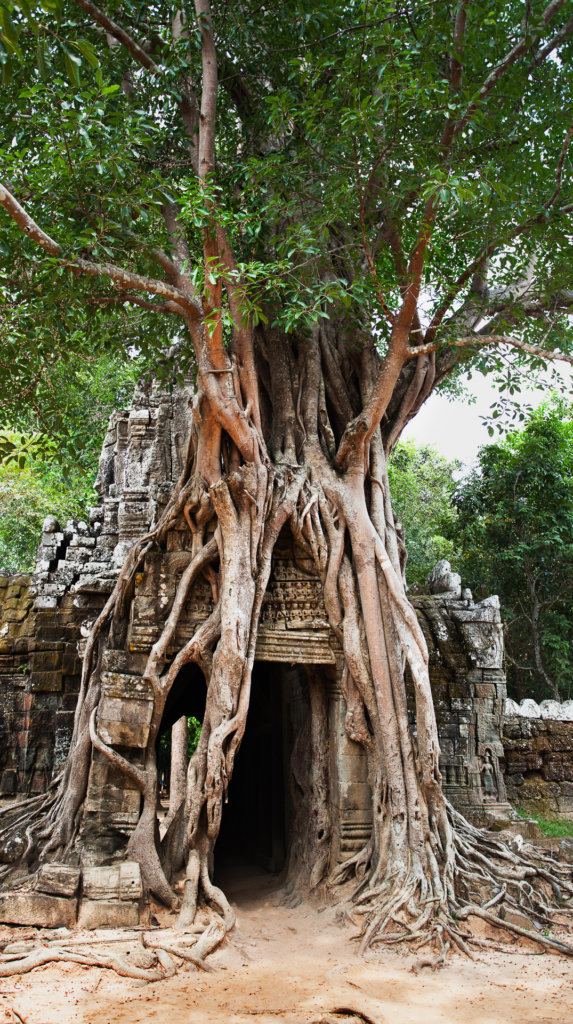
Once you escape the first batch of sales kids (on exit, I was told “thanks, now I won’t eat” in a huff), entry is through the West gopura, a Bayon style face tower.
A small temple, it has a beautiful and serene atmosphere, and it became an early favourite because of this. Strolling through the grounds and ruins, past Apsara carvings and piles of rubble being ‘sorted through’ by a local worker, you eventually pass through the East Gopura, draped in a strangler fig, another iconic sight.
If you can fight off the next batch of sales kids, you should jump in for a souvenir photo of yourself in the doorway
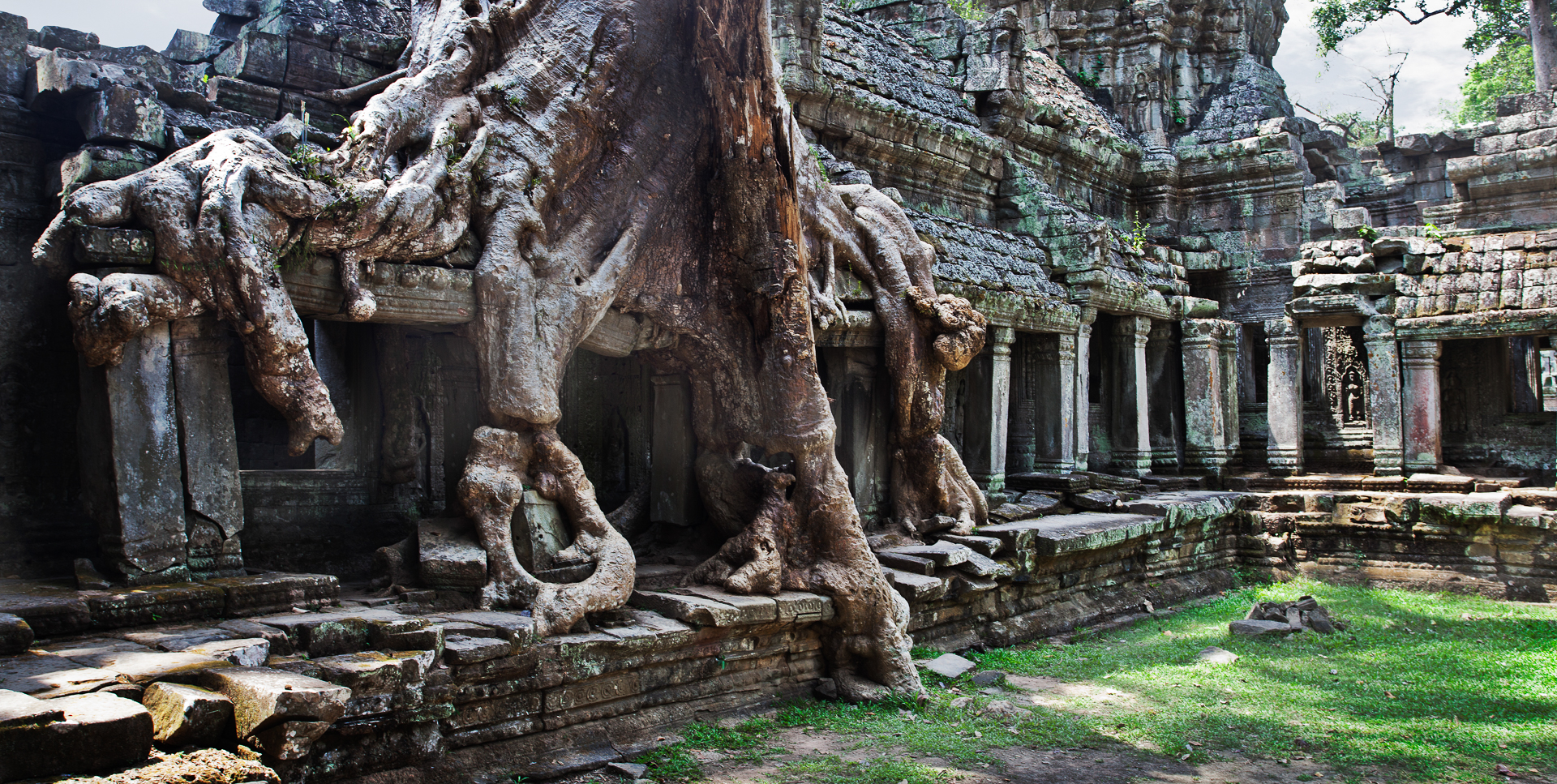
Preah Khan
“Sacred Sword” – 1191 AD
The extensive complex of Preah Khan really feels like it never ends, particularly as you make the journey within the central corridor. Other corridors, shooting off to secret looking sections of ruin are endless and so are the numerous rooms, most of them piled up inside with the collected rubble that has been cleared from around the site, a strange sight to see when you are looking in on it through the windows.
Spectacular sights await on every turn, from the huge Garuda on the outside wall to pairs of feet where the rest of the statue once stood, lions, stupas, elderly fortune-tellers eager to earn a dollar and the only two-story structure at Angkor in Romanesque style with closely spaced columns, but no trace at all of any means of access to the upper floor.
Emerging out through the East gopura, turn to the right where two huge silk cotton trees are slowly devouring the gallery. One day these will likely fall under their own weight. They are so entangled in the stonework, that when they do, they will take that part of the building with them. The ruins are like a sleeping giant, still active but moving much too slowly to witness.
After we had emerged from Preah Khan and ventured back out over the Naga bridge and out to the road, we enjoyed lunch at our first ‘local restaurant’, which fabulously consisted of a dirt floor, tin roof, plastic chairs and random chickens wandering amongst the tables. They would probably be someone’s lunch tomorrow.
Follow on Pinterest: I booked it!

